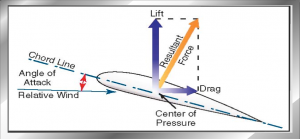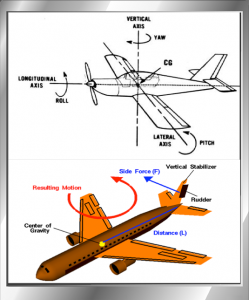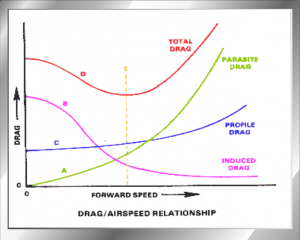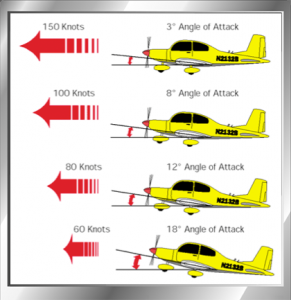1) The coefficient of lift …
- is proportional to the square of airspeed.
- is zero at symmetric foils at zero angle of attack. (correct answer)
- reaches minimum value at the critical Angle of attack.
- is constantly increasing with increasing AoA.
Explanation:

2) Yawing is a rotation about:
- The normal axis controlled by the elevator.
- The longitudinal axis controlled by the ailerons.
- The lateral axis controlled by the rudder.
- The vertical axis controlled by the rudder. (correct answer)

3) Which drag component is not increasing with raising speed?
- Induced drag. (correct answer)
- Profile drag.
- Parasite drag.

4) The term angle of attack” is defined as the angle”
- formed by the longitudinal axis of the airplane and the relative wind.
- between the wing chord line and the relative wind. (correct answer)
- formed by the longitudinal axis of the airplane and the chord line of the wing.
- between the horizontal tail chord line and the wing chord line.
Explanation:

5) When does P-factor cause the airplane to yaw to the left?
- When at high airspeeds.
- When at low angles of attack.
- When at high angles of attack.
Explanation:
(P-factor occurs when the airplane is flown at a high angle of attack. The downward-moving blade on the right side of the propeller (as seen from the rear) has a higher angle of attack, which creates higher thrust than the upward moving blade on the left. Thus, the airplane yaws around the vertical axis to the left.
